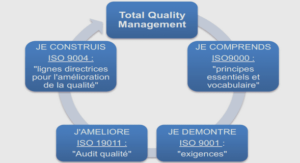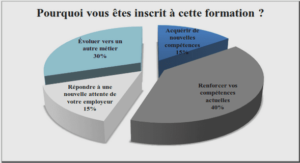Derivation and compounding in English and Diola-Fogny
Morphology is divided into two major fields : inflection and word formation
The latter is subdivided into derivation and compounding. For their coinage, certain words require special operations referred to as derivation.
Definition of derivation
Derivation is the operation which consists in forming a new lexical unit by adding to an existing word an element that is non-autonomous called affix. The lexical bases thus formed by affixation are called derivatives. Yet, derivation does not always resort to affixation ; one can form words by derivation without using any affixes. Derivation is one aspect of word-formation, which, with inflection, belongs to morphology, as shown in the following figure. In the English language, it is one of the constituents of the core of lexical word-formation. In Diola-Fogny, it does not function exactly the same way, as it is going to be shown later :
Derivation processes
The modes of derivation are prefixation, suffixation and infixation. The last one is the production of word parts that fit into the middle of a word, and can have both an infix and a suffix attached to it. About infixes Ingo Plag wrote : “While suffixes and prefixes are very common in English, there are also rare cases of affixes that cannot be considered prefixes or suffixes, because they are inserted not at the boundary of another morpheme but right into another morpheme. Compare again our formation abso -bloody -lutely from above [on page 7], where – bloody- interrupts the morpheme absolute (the base absolutely consists of course of the two morphemes absolute and -ly). Such intervening affixes are called infixes.”17 H. A. Gleason Jr. added : “In Tagalog ginulay ′greenish blue′ is formed from the root gulay ′green vegetables′. The -in is clearly an infix.”18 Edward Sapir almost denied the occurrence of the infix in the English language when he wrote : “We have reserved the very curious type of affixation known as “infixing” for separate illustration. It is utterly unknown in English, unless we consider the -n- of stand (contrast stood) as an infixed element. The earlier Indo-European languages , such as Latin, Greek and Sanskrit, made a fairly considerable use of infixed nasals to differentiate the present tense of a certain class of verbs from other forms (contrast Latin vinc – o “I conquer” with vic – i “I conquered” ; Greek lamb – an – o “I take” with e -lab – on “I took”)”19 Infixation is what Leonard Bloomfield called in Language “affixation within the word”. The role of the infix is to modify the meaning, the grammatical value of a word. Infixation is a quite rare operation – it is just common in Borneo-Philippines languages –. It is not important in European languages and seems non-existent in Diola-Fogny. For P.-M.Sambou, in Diola, like compounding, derivation is dependent on «synthématique», which is defined as the study of the process by which a language builds up its own lexicon, and, unlike compounding, it is worked out according to processes which concern either the theme or entire forms which are dependent on a determined grammatical category
Prefixation
Prefixation is the linguistic process that forms words by adding morphemes (affixes) at the beginning of words. In prefixation, the derivative always belongs to the same morphological class as the base ; so, it does not have a grammatical function, its function is purely semantic. A prefix never entails the presence of an allomorph at the base. e.g. : il -legal “il-”, here, is the prefix; and “legal”, the base. Derivational prefixes do not exist in Diola-Fogny ; so, this dialect resorts a lot to class prefixes, above all in the field of evaluative morphology (the expression of the diminutive and the augmentative). Quite common an operation, as prefixation, is suffixation. • Suffixation Contrary to what happens in prefixation, depending on the suffix that is added, the derivative may or may not belong to a morphological class different from that of the base. Therefore, it has a grammatical value as it indicates the derivative’s morphological class. It also indicates the derivative’s morphologic sub-class. The suffix may entail base allomorphs. e.g. : (to) legal -ise “-ise”, here, is the suffix Suffixation is by far more abundant than prefixation in Diola-Fogny. As mentioned earlier, suffixed words in Diola-Fogny have necessarily a prefix which is a class prefix at the beginning of the nominal or verbal :kateepen “to fill in” ( a hole, fissure, crack, etc.) ; ateepena “a filler” ka (cp) -teepen (theme) ; a (cp) -teepena (theme) Another important thing to examine, after derivation processes, is derivation types.
Derivation types
In English as in Diola or Diola-Fogny, there are two types of derivation : nominal derivation and verbal derivation. • Nominal derivation Nominal derivation refers to derivatives that belong to the category of nominals. In Diola-Fogny, nominal markers generally occur only in nouns. • Verbal derivation Verbal derivation refers to derivatives that belong to the category of verbals. As said earlier, in Diola-Fogny, verbal markers can occur in both nouns and verbs.
ACKNOWLEDGEMENTS |



